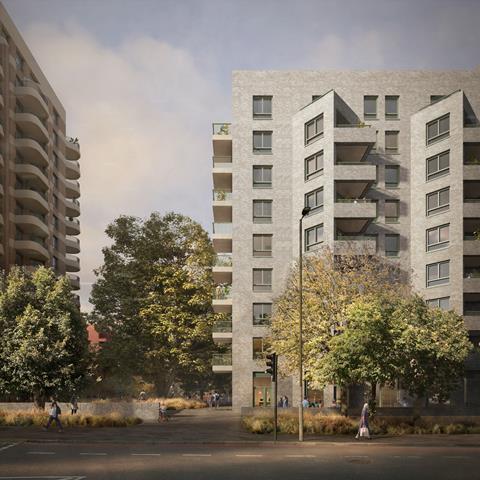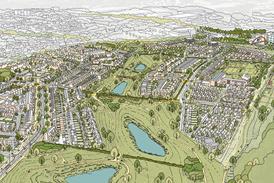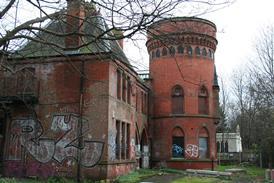Peabody denies claim that information on scheme’s impact was ’deliberately withheld’

A decision on AHMM’s controversial plans to build nearly 1,000 homes on the former site of a women’s prison in north London has been deferred by Islington councillors amid a barrage of objections.
Councillors decided they wanted to look more closely at the proposals and the impact on nearby existing homes.
The Peabody project, which was recommended for approval by the council’s planning officers, has already been revised to expand the size of a women’s centre on the site and reduce the height of buildings.
But campaigners said the scale and density of the scheme was “clearly inappropriate” and accused Peabody of deliberately withholding information from residents living in nearby homes, something the housing association denied.
Located on the site of the former Holloway women’s prison, once western Europe’s largest women’s prison before its closure in 2016, the scheme would see the construction of a public park and 985 homes in buildings up to 14 storeys.
AHMM appointed an all-female team led by a “gender equality champion” to redesign the women’s centre last year after the plans were criticised by campaigners for not being drawn up by a female-led practice.
The meeting earlier this month heard a series of objections from residents of adjacent estates who said the scheme would have a “severe” impact on daylight for some homes.

Helen Strongman, chair of the Bakersfield residents association, said 40 out of 168 windows affected would see light reduced by more than 40% because of the density and height of the development.
She also quoted residents who said the 14-storey blocks would be “overwhelming” compared to the maximum five-storey buildings which currently exist on the periphery of the site.
The meeting also heard claims from architect Neil Kahawatte, speaking on behalf of the Penderyn and Trecastle residents association, that Peabody had repeatedly ignored requests during the consultation period to provide information on the scheme’s impact on nearby homes.
Kahawatte said drawings showing height relationships between the new blocks and existing homes, visualisations showing the impact on the skyline and information on light levels were “deliberately withheld” from residents until the proposals were submitted for planning.
He said that as a result there had not been an ”opportunity throughout the design process to properly discuss and mitigate the harms to existing residents at the periphery of the site”.
He added that buildings would be up to six storeys higher than existing homes and that “the scale and mass would clearly be inappropriate in relation to our homes”.
Peabody said that it met with the residents associations before the proposals were submitted and presented “as much information as we had available at the time”.
The housing association said it had listened to feedback and made changes to some blocks late in the design process, adding: ”After submitting planning, we met with both [residents associations] again, along with our daylight and sunlight consultant, to clearly explain the results of our daylight and sunlight report, and what this means for those residents.
“We also highlighted where this information can be found in our planning application.
“We have held consultation events and hundreds of hours of community meetings to understand the priorities of local people and the feedback from these has helped to shape our plans for Holloway. We will continue to engage with our neighbours and the community as the scheme progresses.”
>> Also read: AHMM director hits back at critics of Holloway and St Thomas’s schemes
Campaigners including architect Sarah Wigglesworth said last summer that the proposals do not sufficiently reflect the heritage of the prison, where dozens of suffragettes were incarcerated.
Other inmates have included Moors murderer Myra Hindley and Diana Mitford, wife of the fascist leader Oswald Mosley. Five women were executed there including Ruth Ellis, the last woman to be judicially hanged in Britain. Oscar Wilde was also an inmate before it became a women’s prison.

The council has not set a new date for the plans to be considered.
















No comments yet